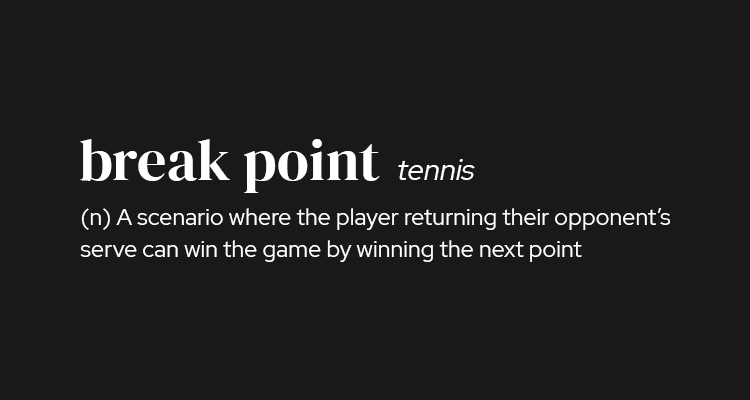Okay, so the other day I was watching a tennis match, and I kept hearing the commentators talk about “break points” and “break point wins.” I kinda got the gist of it, but I wanted to really understand what was going on. So, I decided to do a deep dive and figure it out for myself.
Digging into the Rules
First, I pulled up the official tennis rules online. You know, just to make sure I wasn’t missing anything basic. I read through the scoring section, refreshing my memory on how games, sets, and matches work.

Then, I focused on the part about “break points.” The rules explained it pretty simply: a break point happens when the returner (the player receiving the serve) is one point away from winning the game. And that’s a big deal because in tennis, you usually win games when you’re serving. So, winning a game when the other person is serving is called a “break,” and it’s a huge advantage.
Watching Some Matches with New Eyes
Armed with this knowledge, I went back and watched some more tennis. This time, I paid super close attention to the score, especially when someone was serving. I started noticing the patterns. Like, when the server was down 30-40, the tension in the air was thick because the returner has a break point!
I saw how players fought extra hard on those break points. The servers would try to hit their best serves, and the returners would scramble for every ball. It was like a mini-battle within the bigger match.
Putting It All Together
So, here’s what I figured out:
- A “break point” is a situation where the player receiving the serve is only one point away from winning the game.
- It is described as 30-40 or 40-A, given the server is the first number.
- A “break point win” means the returner actually did win that point and “broke” the server’s serve.
- Winning on a break point is a big deal because it’s harder to win a game when you’re not the one serving.
It’s like stealing a game from your opponent. No wonder those points are so exciting to watch!

I feel like I really understand this part of tennis now. It’s made watching matches even more enjoyable because I can follow the strategy and the drama on every single point. Next, I think I’ll try to figure out what a ‘tiebreak’ is, but that is an issue for another time.










